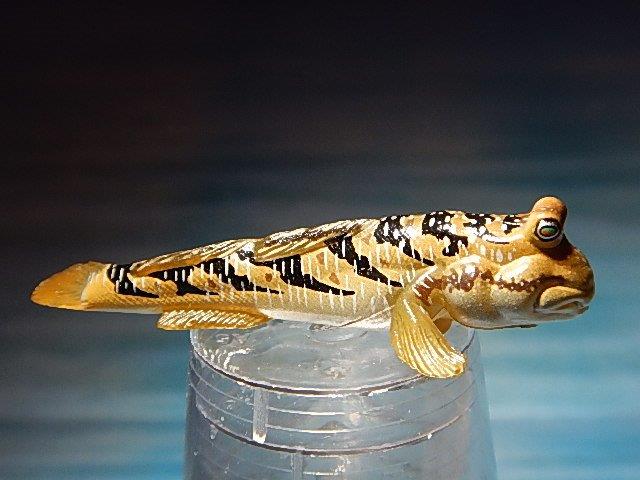
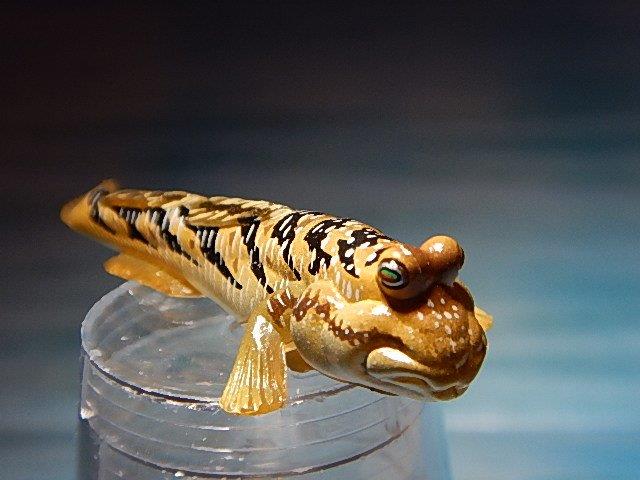
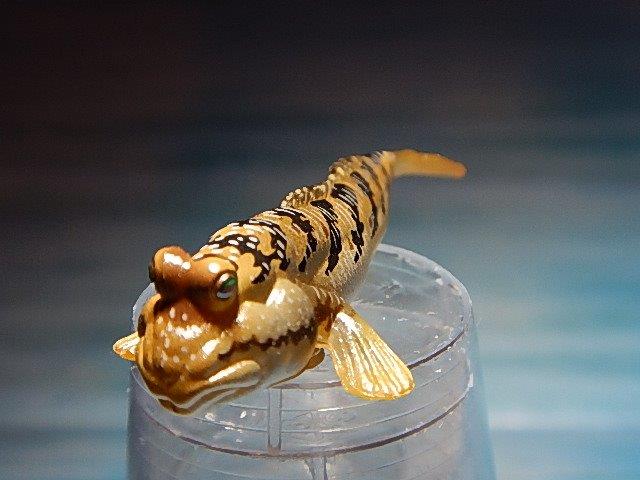
This figure is the Barred Mudskipper, Periophthalmus argentilineatus (also called the silver-lined mudskipper, which is literally the species name), model 29 and number 14 from the second series. Once again, I eventually got my hands on both versions, with the second release first. This is the second Yujin goby, this time as the representative of the mudskipper subfamily (Oxudercinae, family Gobiidae) in the series. This is a very widespread species, in estuarine and brackish coastal regions along the Indo-Pacific oceans. This means that they range from southern Africa through the Red Sea to Oceania and Australia, north along the coast of China to Korea and the southern islands of Japan, and then further east across several Pacific localities. A map through Fishbase also indicates that they may occur in the more equatorial/sub-tropical Pacific coastal regions of the Americas, making this the most naturally widespread figure in the Yujin series!
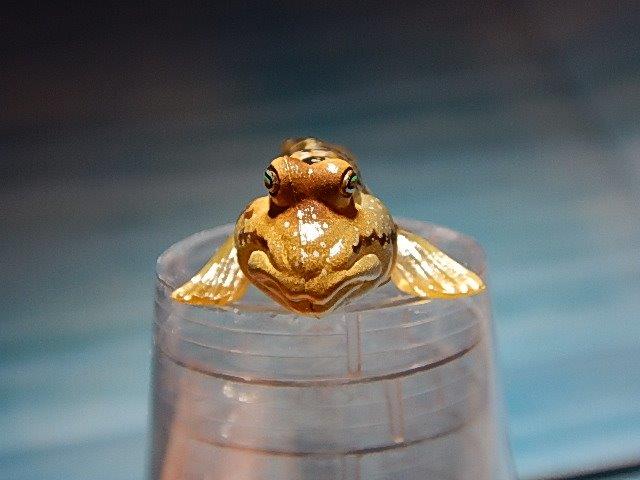
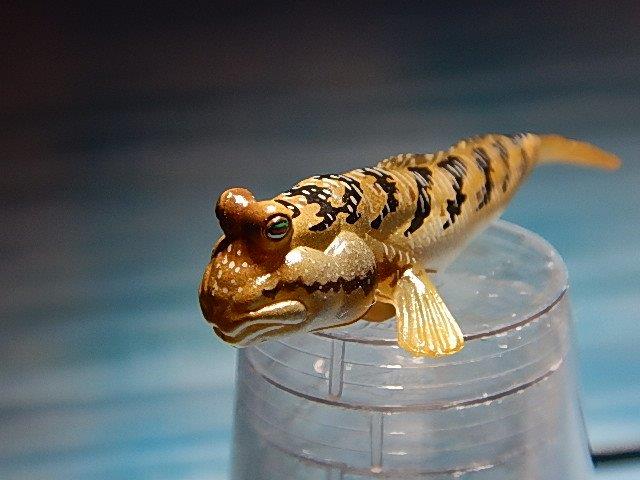

With a range like this, I’m honestly surprised that they have not been divided taxonomically into many separate species or subspecies (at least, ones that have held up to scrutiny). Mudskippers are of course famous for their ability to leave the water during lower tides to wander along mudflats, mangrove swamps and other tidal environments to hunt, even climbing trees using the pelvic-fin suction cup. The barred mudskipper is no exception, found in mangroves forests and other vegetated marginal areas. They are also found in aquariums; although I don’t recall the species, I actually successfully kept a vivarium with mudskippers and other estuarine animals for a while, and they are as fun to watch as they sound (catching the crickets before the archerfish could shoot them, for example!). The Yujin model gives a length of 9cm, although most sources referred to them as 19cm. The barred mudskipper is considered Least Concern by the IUCN.
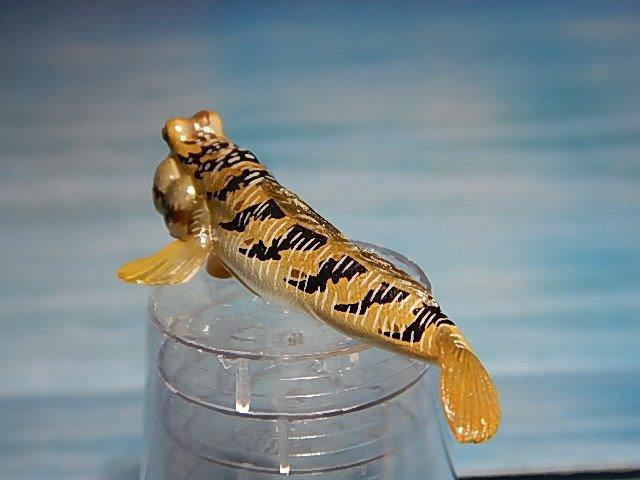
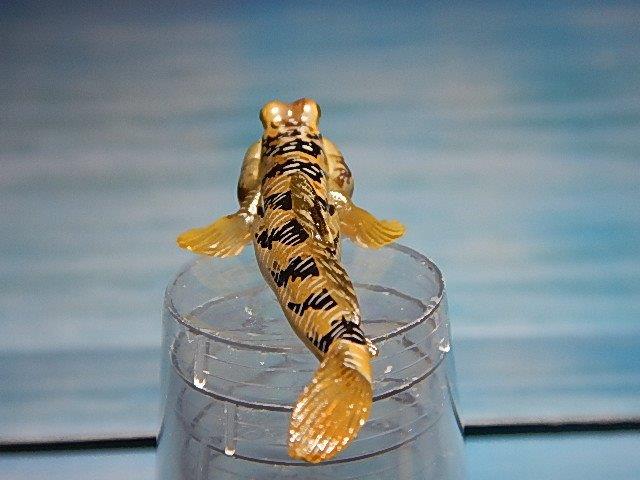
This model measures 6cm long, giving a scale of roughly 1:2 (1:3 with the longer, more frequently seen length). This is another very complex-patterned fish, possible the hardest to describe yet! It is a variety of shades of brown, darker on the dorsal margin fading to very light brown and then white on the belly. There are numerous black bars across the back, each of which has ragged markings and tend to sweep anteriorly from their origin on the dorsal column. On top of all of these are two irregular rows from the pectoral fins to the base of the tail which are very thin, very vertical, and very light crème colour. On top of the head, along the cheeks and where the ‘neck’ would be, are a scattering of crème coloured dots. A dark band extends across the cheeks from above the upper lip to the pectoral fin.
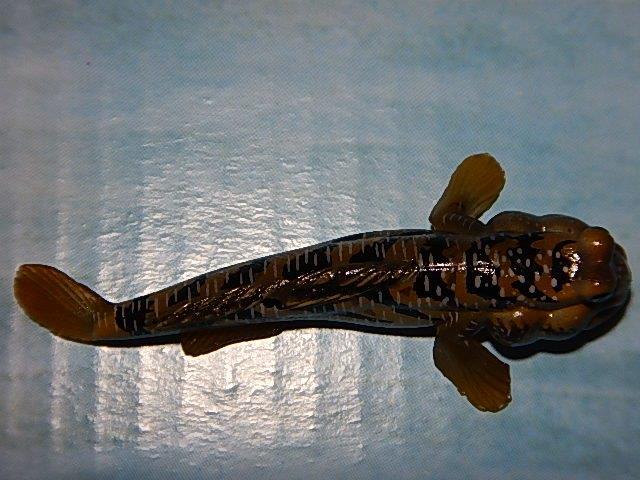
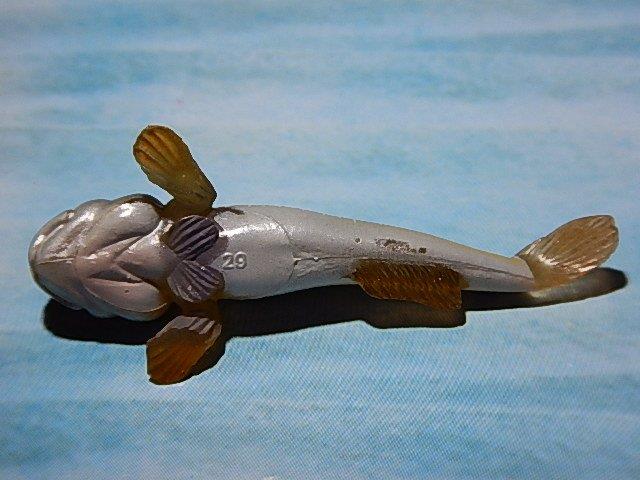
The body itself is a great sculpt of a resting or calm Mudskipper, with a big, bulbous head and a body tapering to a point at the tail. The dorsal and caudal fins are sculpted in a yellow plastic, but they are lying flat, indicating that the Mudskipper is not threatening or fighting (as opposed to the Amur Goby, whose raised fins are a more aggressive pose). The pectoral fins look like the others, but are in the position of propping up the fish, as they would when walking. The head appears to be sculpted to show the gills filled with water, so the Mudskipper can crawl on the beach or trees; this or it just has really big cheeks! The pelvic fins are more separate than in the Amur Goby, which makes sense as these fish do not tend to ‘stick’ to surfaces the same way. This is another Yujin fish without any base at all; seeing as it is in a walking pose, this makes sense, although it would have been neat to see it on a branch or mangrove root or something.
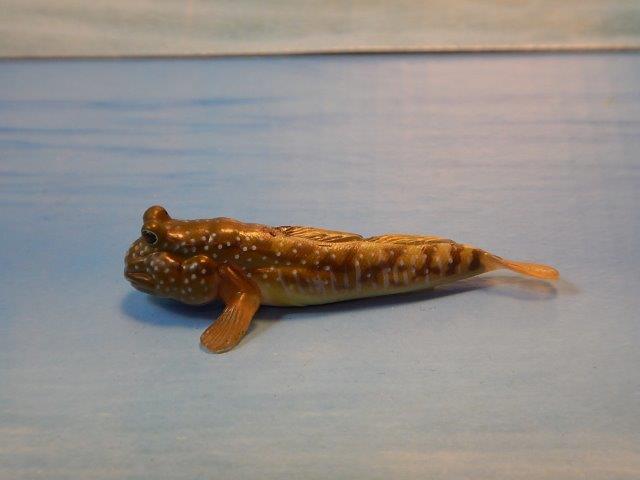
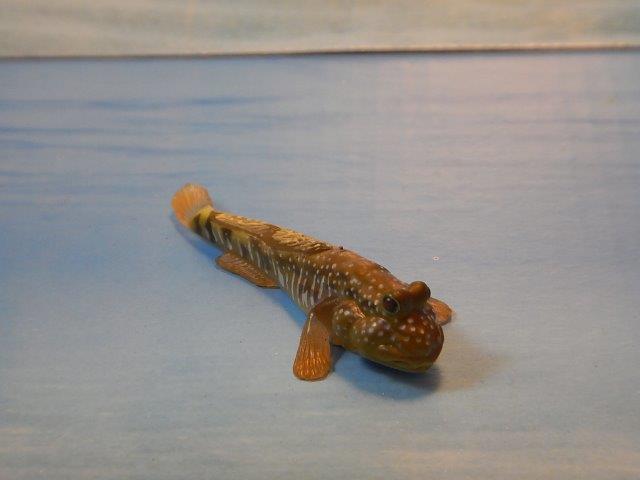
Then I obtained the first release of the Barred Mudkskipper, Periophthalmus argentilineatus. As with the second release, it is model number 29. The overall colour of the Release 1 mudskipper is a light brown with irregular dark brown saddles and stripes on the sides—the markings do not match in any way on the two sides of the fish. The body is then overlain with numerous white dots along the dorsal margin and across the entire head. The sides have thin silvery-white vertical stripes from behind the gills to the base of the tail. All of the fins are translucent yellow-orange, except the dorsal fins, which are folded onto the body, and coloured like the body. The face and head is uniformly olive-brown, with the aforementioned white spots. The pupil of the eye is a dark red circle, ringed by black. The belly is a light yellow to white; the pelvic fins are white like the body.
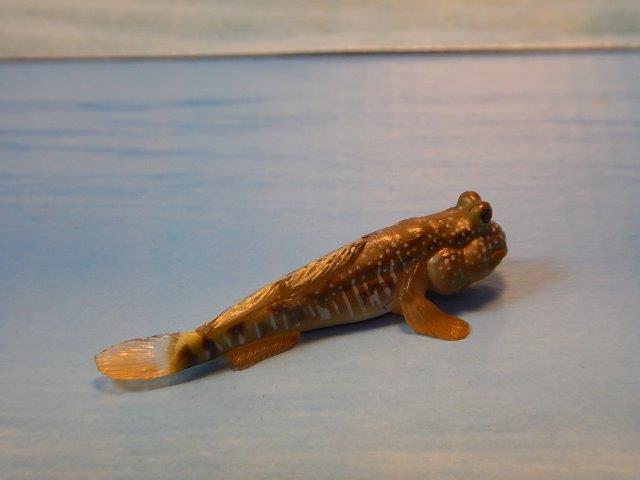
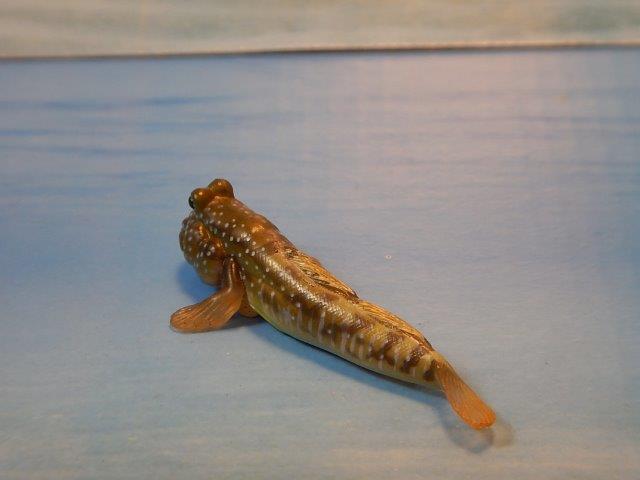
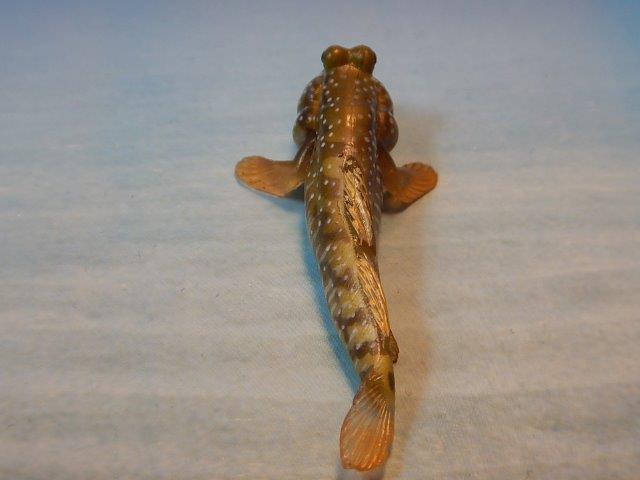
The most notable colouration in this figure is in what it is missing—it does not have the prominent, dark black bars along the sides (as seen in the Release 2 version). This is odd, as the black bars are what gives the fish its common name! At least it has the silvery lines I guess. Still overall a nice fish figure, and different enough from the Release 2 that it could be seen as a unique individual.
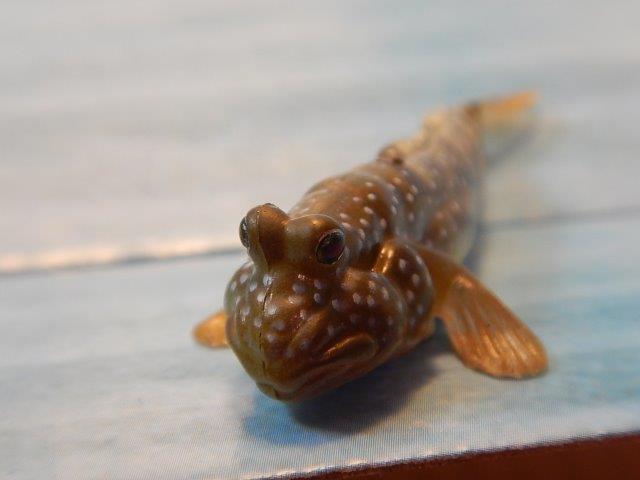
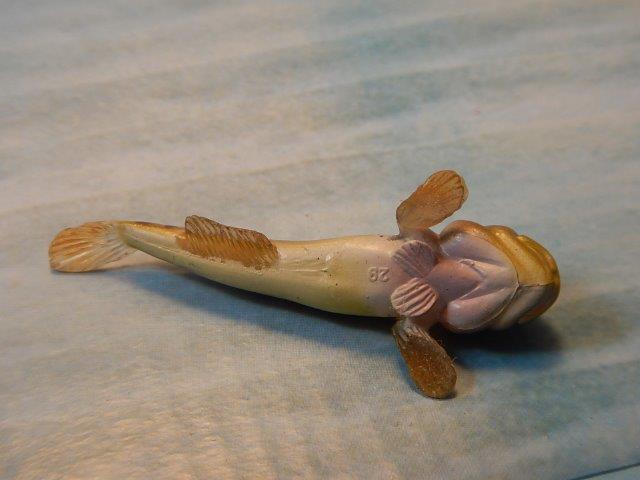
There are a few other mudskipper figures out there, but like the goby they are generally different species, again from Yujin and Kaiyodo.
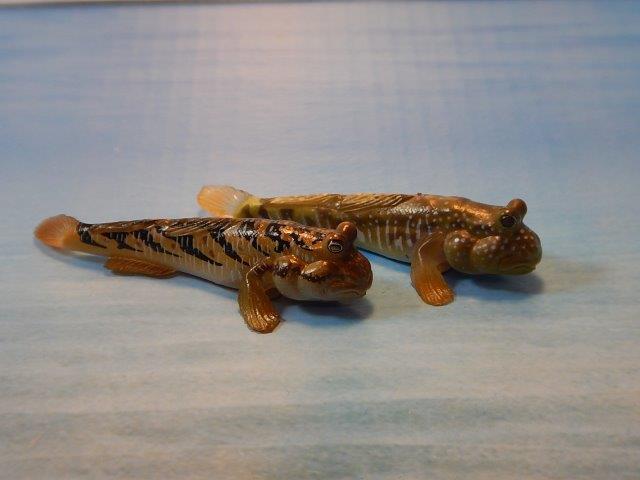
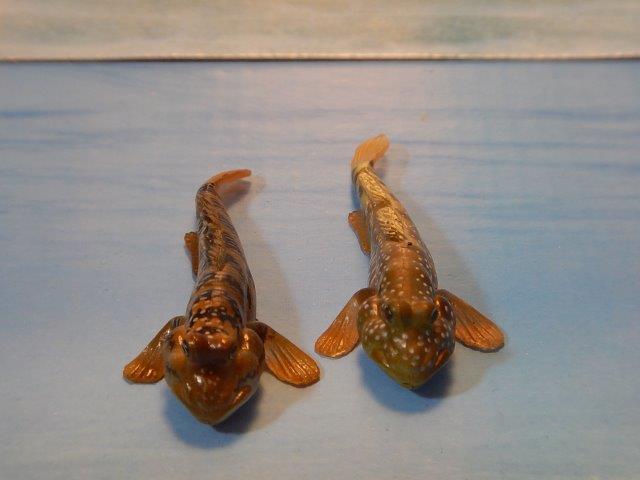
Starting on the 14th of January, 2024, I migrated my first Yujin Freshwater Fish Pictorial walkaround post from the Animal Toy Forum to this blog, with the intention of moving all species’/figures’ walkarounds here. The initial post contained a lengthy explanation of the series (both the original and updated) that I don’t think should be repeated each time! For those details, the post can be seen at the first post. Then we can just get to the fish. Most of the details and writing will come from the original post, although I may supplement/add where appropriate.

From the Forum:
- Jetoar: Wooooo a Muskipper figure. I didnt know this figure and it is really impresive
- brontodocus: Brilliant! So far, I only knew about a Kaiyodo mudskipper, this one is new to me!
- sbell: There are actually a couple from both companies–I have a different species from Yujin from the Saltwater series (they should have just done a brackish set…) and one of the two that Kaiyodo makes, both of which are bottlecap figures!
- postsaurischian: Love the Mudskipper … and the whole series. I’m glad I bought a lot of them for very cheap prices a few years ago. One of the best fish series of all time!
- sbell: Tell me about it, they’re great figures. Years ago I bought a near-complete set, missing only two species (and, of course, a lot of the variants). I have since managed to track one of them down, but still need a carp. Not even the overpriced, rare koi-colourings. Just a carp. Which is proving frustratingly difficult.
- brontodocus: It’s great to see you post so many of the Yujin Freshwater Fishes, Sean! Since they’re becoming increasingly rare it’s very helpful to get all this comprehensive information (my Yujin fishies count is still zero). Have you thought about making a separate thread that includes the entire series (e.g. in the Animal toy lines section)?
- bmathison1972: …or maybe do what I did for some of the insect sets and do it all as a Review (rather than individual walkarounds), still here under ‘Yujin’. This review would, of course, complement your detailed walkarounds
- sbell: I will do that, yes (Ron Howard voice: he would not)–but only once I’ve got the last stupid fish of the series (maybe because it took so long). I never thought I’d chase after a silly carp figure so much–ot have it prove so difficult. There are really expensive options, of course, but unless someone wants to buy the rest of a $150 set or something, I’m just going to have to be patient. Then, when they are all at least represented (it’s unlikely I can ever complete the set with all of the colour variant koi, char, cherry salmon, and gold eel) then I can lay them out properly (again, I didn’t–until recently in that introductory post). Until then, I will move on to other fish! The Marmit series needs some attention. Maybe. They aren’t really as nice…(and indeed it never happened)
Disclaimer: links to Ebay and Amazon on the AnimalToyBlog are affiliate links, so we make a small commission if you use them. Thanks for supporting us!



